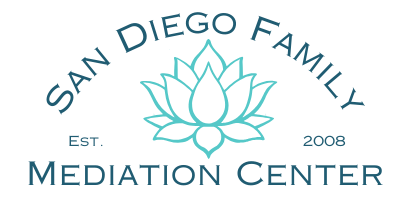When couples decide to part ways in California, an uncontested divorce can be a peaceful and cost-effective option. Unlike a contested divorce, where disagreements lead to court battles, an uncontested divorce occurs when both parties are in alignment (for the most part) on major issues like property division, child custody, and support. This does not mean 100% agreement on all aspects of these major issues – but rather – in a general sense, the parties are aligned with the big picture, but need help hammering out the details. This blog explores the nuances of an uncontested divorce in California, comparing the mediated and litigated processes to help you understand which path might be right for you.

Understanding Uncontested Divorce in California
An uncontested divorce in California is a legal process where both spouses agree on all terms of their separation, avoiding the need for a contentious court trial.
This type of divorce is often quicker, less expensive, and less emotionally taxing than a contested divorce. To qualify, couples must meet certain requirements, including residency in the state and agreement on key divorce issues.
The Mediated Divorce Process
Mediation involves a neutral third party who helps couples negotiate and reach an agreement on divorce terms. The steps typically include:
- Choosing a Mediator: Selecting a qualified professional to guide the process.
- Initial Meeting: Setting goals and discussing the issues at hand.
- Negotiating Terms: Working out details on property, custody, and support.
- Drafting the Agreement: Creating a document that outlines the agreed terms.
- Filing with the Court: Submitting the agreement for legal approval.
Divorce mediation is less confrontational and often more satisfying for both parties. It allows couples to maintain control over their divorce terms and often results in a more amicable post-divorce relationship, which is particularly beneficial if children are involved.
The Litigated Divorce Process
In contrast, a litigated divorce involves the court system and often, legal representation for both parties. The process generally follows these steps:
- Filing a Petition: One spouse files for divorce and serves it to the other.
- Response: The other spouse responds to the petition.
- Discovery: Gathering evidence and information from each other.
- Pre-trial Motions and Hearings: Addressing any preliminary issues.
- Trial: Presenting the case to a judge for a final decision, if necessary.
Divorce litigation can be lengthy, expensive, and emotionally draining. It often leads to a more adversarial environment, which can strain familial relationships and result in less satisfying outcomes.
Comparing Mediated and Litigated Divorce
Comparing these two approaches, mediation generally offers a quicker, more cost-effective, and less emotionally charged path to divorce. It fosters better communication and offers more privacy than the public court process of litigation. Conversely, litigation might be necessary in cases where parties cannot reach an agreement or when other complex issues are involved.
In conclusion, choosing the right path for your divorce in California depends on your specific circumstances. While mediation offers many advantages, particularly in an uncontested divorce, it’s essential to consider all factors, including the complexity of your situation and your relationship dynamics. Consulting with a legal professional can provide valuable guidance.
Remember, regardless of the path chosen, a harmonious resolution is often possible with the right approach and mindset.
Contact San Diego Family Mediation Center for a free, personalized consultation tailored to your situation.
by: Jennifer Segura, J.D., CDFA®






